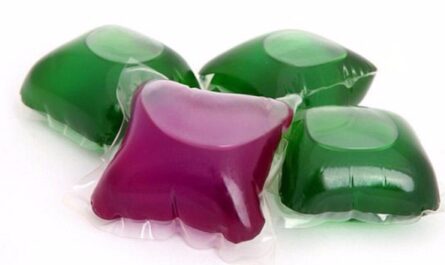Lyocell fabric is derived from wood pulp through a solvent-spinning process that allows it to maintain the natural qualities and comfort of cotton while being more environmentally sustainable. As consumers become increasingly eco-conscious, lyocell has grown in popularity due to its renewable resource base and reduced environmental impact compared to other man-made cellulosic fibers such as rayon. With its breathability, moisture-wicking properties and versatility across various apparel and home textile categories, lyocell is fast becoming one of the top fabric choices for sustainably-minded shoppers.
What is Lyocell Fabric?
Lyocell fabric is a type of rayon fiber made from raw wood such as eucalyptus, pine or birch trees through a closed-loop production process. Using an organic, non-toxic solvent called N-Methylmorpholine-N-oxide (NMMO), wood pulp is dissolved and extruded through spinnerets to form lyocell fibers. These fibers are then processed through various stages like washing, drying and packaging to produce the final lyocell fabric. Unlike rayon whose production uses toxic chemicals and large volumes of water, lyocell employs a closed-loop system where over 99% of the NMMO solvent is recovered and reused, making it greener than conventional viscose rayon.
Sustainable Qualities of Lyocell
One of the biggest advantages of lyocell fabric is that it uses sustainably harvested wood pulp as its raw material. Trees used to make lyocell are grown primarily from managed tree farms and plantations, ensuring a consistent supply. Being produced from a renewable resource lowers lyocell’s carbon and ecological footprint. Its closed-loop production process also conserves water and chemicals. On average, lyocell manufacturing requires over 90% less water and emits 60% lower carbon dioxide compared to conventional viscose rayon. Once the garment is discarded after usage, lyocell fabric biodegrades faster than petroleum-based synthetics, reducing environmental impact. Overall, lyocell is rated amongst the most eco-friendly fabrics for its renewable, recyclable and biodegradable qualities.
Textile Applications of Lyocell
Due to its breathable, absorbent and durable properties without compromising softness and drape, lyocell fabric finds widespread use across apparel, home textiles and industrial textiles. Some popular lyocell textile applications include:
– Apparel: Lyocell is commonly blended with cotton, wool or other cellulosic fibers in t-shirts, underwear, dresses, pants etc for its moisture-wicking and odour-resistant features.
– Bedding: Sheets, duvets, pillowcases made from lyocell blend provide cooling comfort for hot sleepers.
– Home Textiles: Upholstery, curtains blended with lyocell enhances their washability, texture and durability.
– Industrial fabrics: Lyocell’s absorbency makes it suitable for wiping cloths, medical textiles, filtration fabrics etc.
As a result of its eco-credentials and functionality, lyocell has emerged as the frontrunner amongst more sustainably-produced man-made cellulosic fabrics.
Properties and Care of Lyocell Fabric
Some key properties of lyocell fabric that make it a popular sustainable choice are:
– Breathability: Lyocell is highly breathable, allowing evaporation of moisture away from the skin for a cool and dry feel.
– Absorbency: Its cellulosic structure readily absorbs and releases moisture quickly like cotton.
– Softness: Maintains a smooth, silky texture even after multiple washes due to its natural cellulose composition.
– Durability: Close patterning of lyocell yarns make it highly durable and wrinkle-resistant.
– Easy care: Lyocell can be machine washed in cold water and tumble dried on a low-heat setting. It does not require dry cleaning or ironing in most cases.
Proper care enables lyocell fabrics to retain their shape, moisture-wicking properties as well as minimize biodegradation for a longer use-life.
Rising Popularity of Lyocell
With more clothing brands and textile mills embracing sustainability, lyocell is witnessing growing adoption across categories. Major apparel companies have increased their use of certified organic and eco-friendly lyocell in their loungewear, activewear, underwear collections and linen/home décor lines. Global lyocell fiber production reached over 250,000 tons per year in 2020 and is projected to increase at 5-7% annually through 2025. Flexible manufacturing also allows lyocell to be blended with other fibers to suit diverse performance and aesthetic needs. With heightened environmental concerns driving the textiles industry, lyocell positions itself as an ideal sustainable alternative that balances commercial viability with reduced ecological impact.



